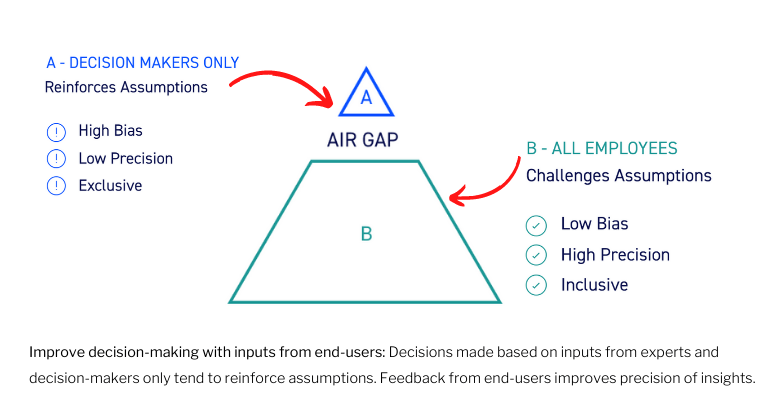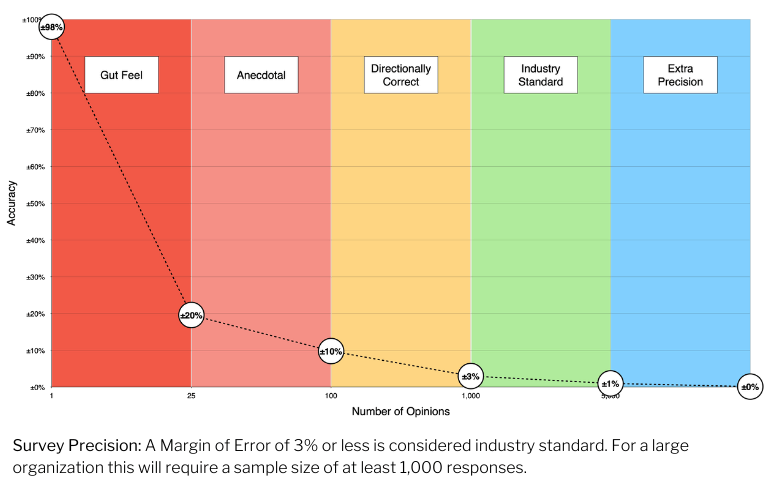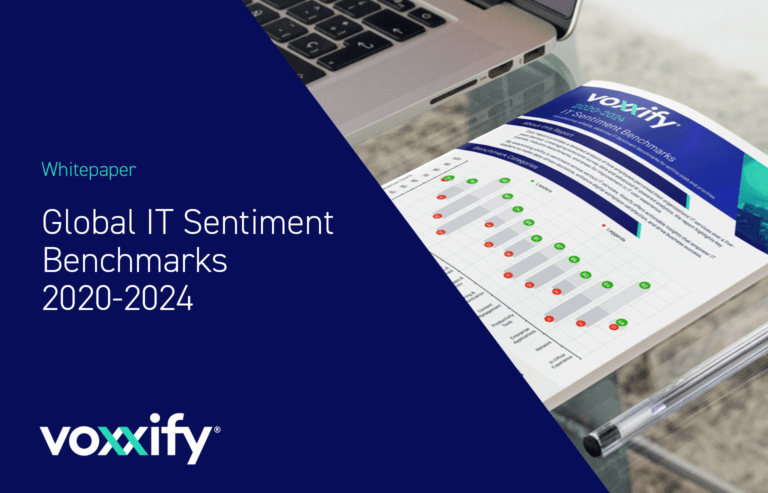IT Experience Whiteboard Video Series: Part One
Why bringing in the input of many end-users improves decision-making.
Part one of a three-part blog series highlighting best-practice in IT Experience in enterprise.
Why IT User Experience matters
IT is changing from cost center to business enabler, driving growth and profit.
With this shift, employee productivity and satisfaction are now key goals for IT, mandating the need to deliver user-centric IT services.
Measuring and understanding the IT User Experience is a critical first step.
Traditionally, decisions about enterprise IT have been made based on input from a small number of decision-makers and experts, combined with data such as IT Support tickets as a proxy for experience metrics. This approach can lead to poor quality, biased data that reflects the perspective of a small subset of users.
A better way is to get quality feedback from as many end-users as possible. This will add valuable context, giving decision-makers a comprehensive view of the business impact of IT in a way that is specific, trendable and reliable.

Decisions only made based on inputs from decision-makers tend to reinforce assumptions, whereas data with inputs from many employees increases precision of insights and sheds light on issues which could be blindspots for different parts of the business.
How many inputs is enough?
When gathering data to make decisions that impact large numbers of people, surveys are the tool of choice. Survey Precision is key to ensure insights are reliable and trendable over time. To enhance precision, reducing the Margin of Error (MoE) is critical*.
For large organisations, MoE is determined primarily by Sample Size: the number of voices engaged. Simply put, the larger the sample, the smaller the MoE and the more confident you can be that the insights reflect the wider population.
The chart below demonstrates this relationship between Number of Opinions gathered (sample size) and Accuracy (margin of error).

For simplicity, we have broken this chart into 5 broad categories:
- Gut Feel & Anecdotal (0-100 inputs): This is the traditional approach to decision-making, relying on the perspectives of a small number of subject matter experts and leaders. This data should be validated with larger samples if possible.
- Directionally Correct (100-1000 inputs): This is a step-up in precision and may be appropriate for initial estimates or less- impactful decisions.
- Industry Standard & Extra Precision (1,000+ inputs): Organizations should aim to survey at this scale when making decisions that impact a lot of people.
How do you ask properly?
Asking thousands of employees about their IT experience can be daunting. Sometimes leaders don’t even want to know the answer, because they feel they don’t have the bandwidth to deal with any new issues.
But that’s not the right way to look at it.
By proactively finding out what issues impact end-users, IT leaders can get ahead of problems, build a business case for investment, and effectively manage stakeholders. Learn how Cerence Inc. used this approach to form their IT action plan during spin-out from parent company Nuance, leading to a 50% improvement in overall satisfaction, how YBA Kanoo Group used Experience Data to drive digital transformation, and how Microsoft use “employee signals” to prioritize investment.
If you haven’t gathered comprehensive IT Experience metrics before, you can get started by downloading our IT Budget Planning Toolkit. It provides practical frameworks and a simple IT Experience Calculator you can use to ground your IT action plan in business terms, focused on the needs of end-users across your organization.
*Primer on Survey Precision
Let’s say Company X surveys employees and finds that 50% of the respondents say its IT services are “very good.” The MoE is cited as plus or minus 3 percent (±3%). This information means that if the survey were to be conducted 100 times, the percentage who say the service is “very good” will range between 47% and 53%. A MoE of 3% or less is considered industry standard. For a large organisation this will require a sample size of at least 1,000 responses.


